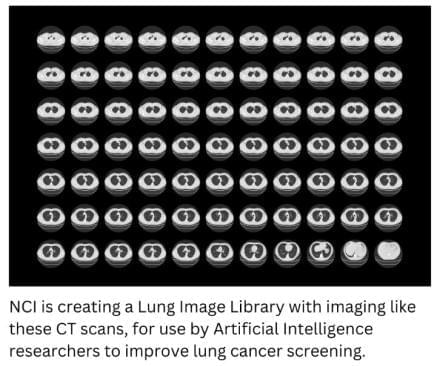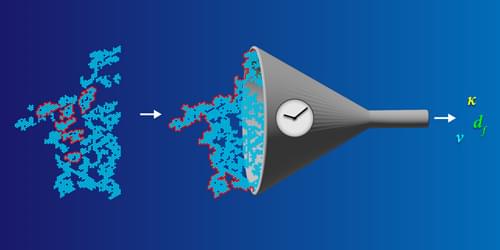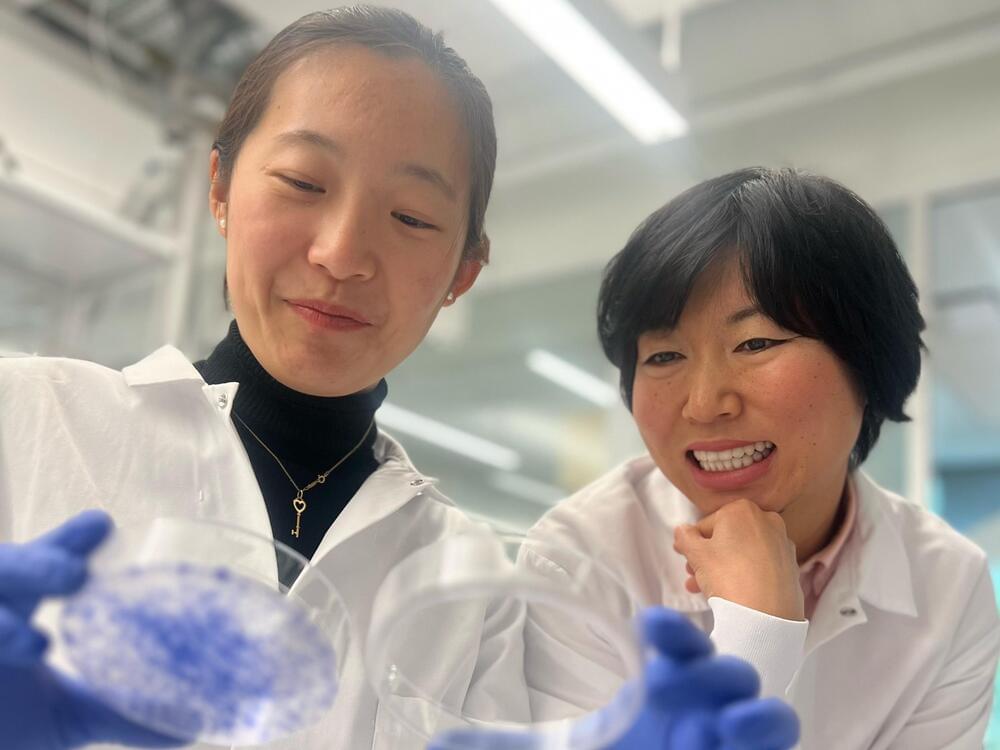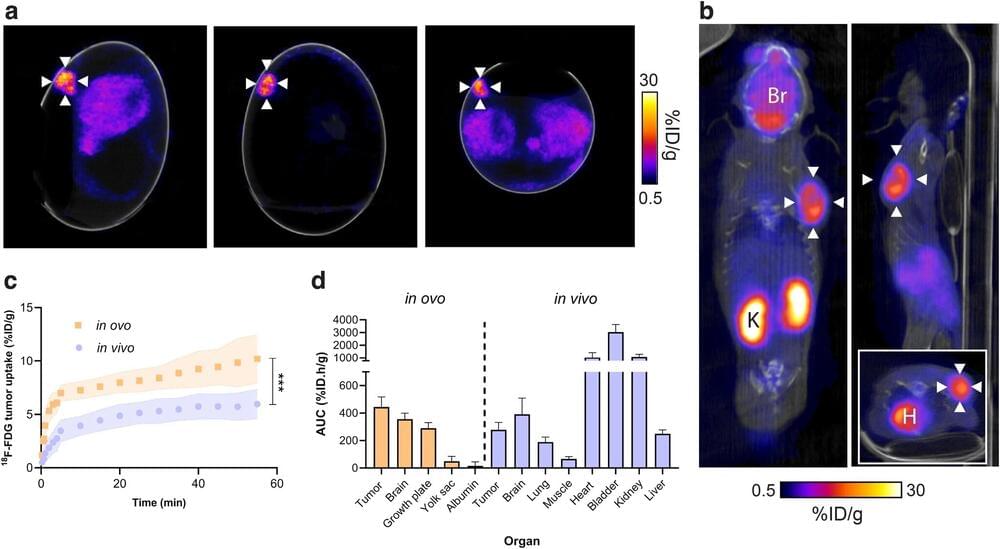There are many ways in which humans may one day be able to reach the icy and exotic moon of Saturn known as Titan in just two years, This direct fusion drive holds the most promise.



How can artificial intelligence help to improve the accuracy of lung cancer screening among people at high risk of developing the disease? Read to find out.
Lung cancers, the vast majority of which are caused by cigarette smoking, are the leading cause of cancer-related deaths in the United States. Lung cancer kills more people than cancers of the breast, prostate, and colon combined. By the time lung cancer is diagnosed, the disease has often already spread outside the lung. Therefore, researchers have sought to develop methods to screen for lung cancer in high-risk populations before symptoms appear. They are evaluating whether the integration of artificial intelligence – the use of computer programs or algorithms that use data to make decisions or predictions – could improve the accuracy and speed of diagnosis, aid clinical decision-making, and lead to better health outcomes.

New theoretical work explores the onset of rigidity in granular materials and other disordered systems by mapping out the edges of rigid regions.
Phase transitions are a common part of our daily lives. Many of them are intuitive: water transforms into steam or ice, birds spontaneously form a flock, and random piles of marbles suddenly jam together into a solid. Possibly the most basic phase transition, however, is a more abstract version called connectivity percolation (CP). In systems displaying CP, individual units such as persons or polymers are mapped by their contacts—or connectors—to a graph consisting of nodes and edges. As the number of connectors increases, the system switches from being disconnected (filled with small, separate clusters) to being connected (spanned by one large cluster). This connectivity phase transition is commonly seen in polymer solutions and pandemic spreading, but researchers have also used the percolation perspective to describe the onset of mechanical rigidity in disordered systems, otherwise known as rigidity percolation (RP).

University of California, San Diego study suggests new way to personalize mental health care.
Major depressive disorder affects 16.1 million adults in the United States and costs $210 billion annually. While the primary symptoms of depression are psychological, scientists and doctors have come to understand that depression is a complex disease with physical effects throughout the body. For example, measuring markers of cellular metabolism has become an important approach to studying mental illnesses and developing new ways to diagnose, treat, and prevent them.
Study links cellular metabolism with depression.

Reminds me of how the space shuttle moved in orbit. Great idea though hopefully they’ll pass it on to us civilians too. That could be very useful. Though the military sometimes passes their tech to us like the CIA is responsible for some medical science amazingly. Yes I was surprised.
DARPA has selected Aurora Flight Sciences to build a full-scale X-plane to demonstrate the viability of using active flow control (AFC) actuators for primary flight control. The award is Phase 3 of the Control of Revolutionary Aircraft with Novel Effectors (CRANE) program.
The X-65 flight is controlled by using jets of air from a pressurized source to shape the flow of air over the aircraft surface, with AFC effectors on several surfaces to control the plane’s roll, pitch, and yaw. Eliminating external moving parts is expected to reduce weight and complexity and to improve performance.
The X-65 will be built with two sets of control actuators – traditional flaps and rudders as well as AFC effectors embedded across all the lifting surfaces. This will both minimize risk and maximize the program’s insight into control effectiveness. The plane’s performance with traditional control surfaces will serve as a baseline; successive tests will selectively lock down moving surfaces, using AFC effectors instead.

Year 2023 face_with_colon_three
Bioengineers and tissue engineers intend to reconstruct skin equivalents with physiologically relevant cellular and matrix architectures for basic research and industrial applications. Skin pathophysiology depends on skin-nerve crosstalk and researchers must therefore develop reliable models of skin in the lab to assess selective communications between epidermal keratinocytes and sensory neurons.
In a new report now published in Nature Communications, Jinchul Ahn and a research team in mechanical engineering, bio-convergence engineering, and therapeutics and biotechnology in South Korea presented a three-dimensional, innervated epidermal keratinocyte layer on a microfluidic chip to create a sensory neuron-epidermal keratinocyte co-culture model. The biological model maintained well-organized basal-suprabasal stratification and enhanced barrier function for physiologically relevant anatomical representation to show the feasibility of imaging in the lab, alongside functional analyses to improve the existing co-culture models. The platform is well-suited for biomedical and pharmaceutical research.
Skin: The largest sensory organ of the human body
Skin is composed of a complex network of sensory nerve fibers to form a highly sensitive organ with mechanoreceptors, thermoreceptors and nociceptors. These neuronal subtypes reside in the dorsal root ganglia and are densely and distinctly innervated into the cutaneous layers. Sensory nerve fibers in the skin also express and release nerve mediators including neuropeptides to signal the skin. The biological significance of nerves to sensations and other biological skin functions have formed physical and pathological correlations with several skin diseases, making these instruments apt in vivo models to emulate skin-nerve interactions.

Breast cancer is the most frequently diagnosed cancer and accounts for 12.5% of all new cancer cases globally. And while the overall incidence has been decreasing and five-year survival rates in the U.S. exceed 90%, the burden of this disease cannot be underestimated.
On December 20, a new study titled “ENPP1 is an innate immune checkpoint of the anticancer cGAMP–STING pathway in breast cancer” was published in the Proceedings of the National Academy of Sciences by a team of Stanford researchers led by Lingyin Li, one of the top experts in the STING pathway in cancer.
Ectonucleotide Pyrophosphatase/Phosphodiesterase 1 (ENPP1) is a multifaceted enzyme that plays a significant role in various biological processes. At its core, ENPP1 is known for its ability to break down ATP, a primary energy molecule in the body, into AMP and inorganic pyrophosphate. This activity is crucial in regulating bone mineralization and preventing abnormal calcium deposits in the body. In addition to its role in bone health, ENPP1 is also involved in regulating insulin signaling, which links it to metabolic disorders like diabetes.


In a paper published in npj Imaging, King’s researchers have assessed the use of fertilized chicken eggs as an alternative model that can resolve both ethical and economic issues for preclinical cancer research.
The use of animal models in cancer research is a major contributor to the clinical development of drugs and diagnostic imaging. However, while invaluable tools, the current standard of using mouse models to recreate diseases is expensive, time-intensive, and complicated by both variable tumor take rates and the associated welfare considerations.
Fertilized chicken eggs contain a highly vascularized membrane, known as the chicken chorioallantoic membrane (CAM), which can provide an ideal environment for tumor growth and study, but to date, relatively few studies have used chick CAM to evaluate novel radiopharmaceuticals.
Medication delivered by a novel gel cured 100% of mice with an aggressive brain cancer, a striking result that offers new hope for patients diagnosed with glioblastoma, one of the deadliest and most common brain tumors in humans.
Cui’s team combined an anticancer drug and an antibody in a solution that self-assembles into a gel to fill the tiny grooves left after a brain tumor is surgically removed. The gel can reach areas that surgery might miss and current drugs struggle to reach to kill lingering cancer cells and suppress tumor growth. The results are published in Proceedings of the National Academy of Sciences.
The gel also seems to trigger an immune response that a mouse’s body struggles to activate on its own when fighting glioblastoma. When the researchers rechallenged surviving mice with a new glioblastoma tumor, their immune systems alone beat the cancer without additional medication. The gel appears to not only fend off cancer but help rewire the immune system to discourage recurrence with immunological memory, researchers said.
Still, surgery is essential for this approach, the researchers said. Applying the gel directly in the brain without surgical removal of the tumor resulted in a 50% survival rate.